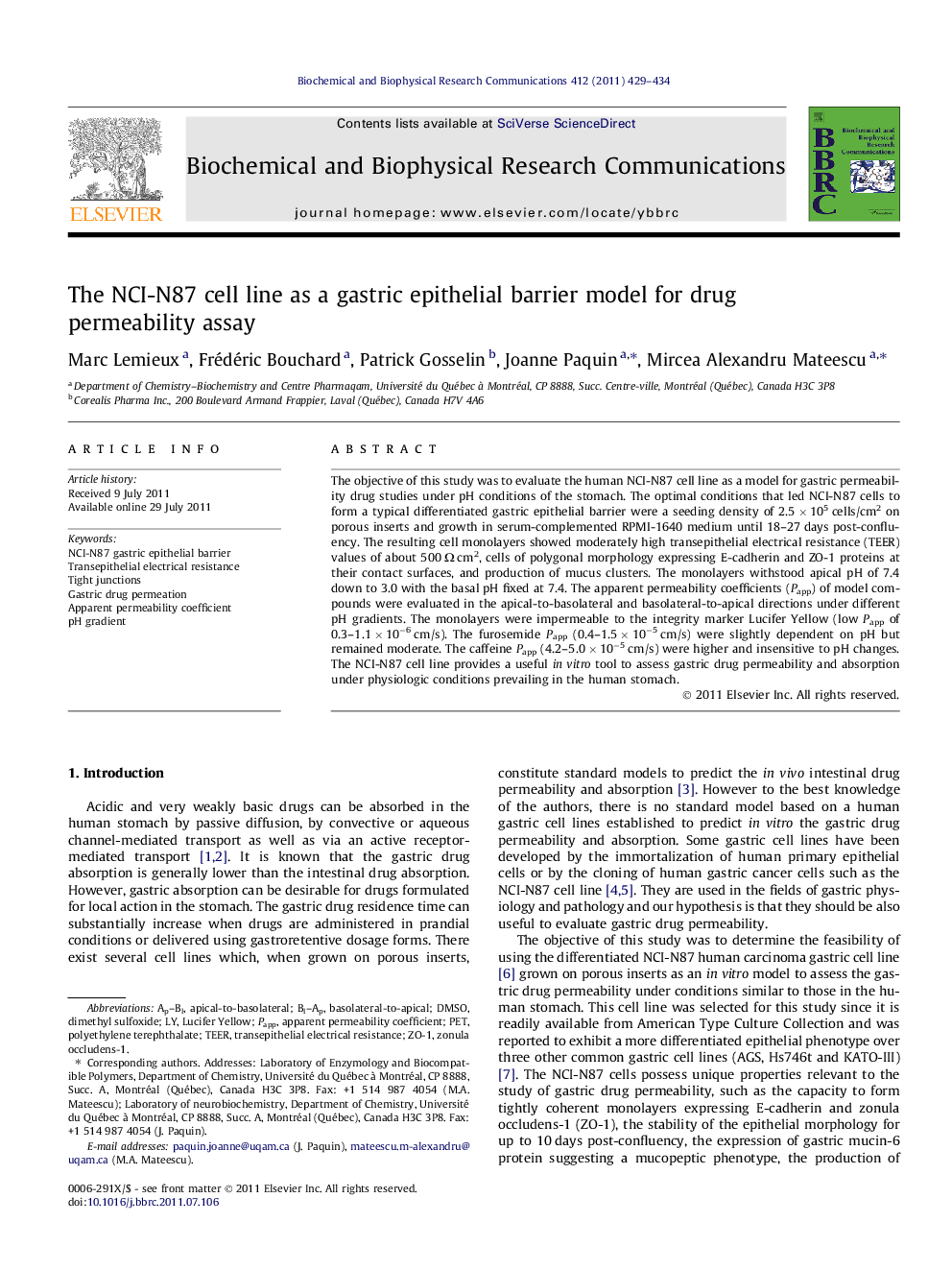| Article ID | Journal | Published Year | Pages | File Type |
|---|---|---|---|---|
| 1930377 | Biochemical and Biophysical Research Communications | 2011 | 6 Pages |
The objective of this study was to evaluate the human NCI-N87 cell line as a model for gastric permeability drug studies under pH conditions of the stomach. The optimal conditions that led NCI-N87 cells to form a typical differentiated gastric epithelial barrier were a seeding density of 2.5 × 105 cells/cm2 on porous inserts and growth in serum-complemented RPMI-1640 medium until 18–27 days post-confluency. The resulting cell monolayers showed moderately high transepithelial electrical resistance (TEER) values of about 500 Ω cm2, cells of polygonal morphology expressing E-cadherin and ZO-1 proteins at their contact surfaces, and production of mucus clusters. The monolayers withstood apical pH of 7.4 down to 3.0 with the basal pH fixed at 7.4. The apparent permeability coefficients (Papp) of model compounds were evaluated in the apical-to-basolateral and basolateral-to-apical directions under different pH gradients. The monolayers were impermeable to the integrity marker Lucifer Yellow (low Papp of 0.3–1.1 × 10−6 cm/s). The furosemide Papp (0.4–1.5 × 10−5 cm/s) were slightly dependent on pH but remained moderate. The caffeine Papp (4.2–5.0 × 10−5 cm/s) were higher and insensitive to pH changes. The NCI-N87 cell line provides a useful in vitro tool to assess gastric drug permeability and absorption under physiologic conditions prevailing in the human stomach.
► NCI-N87 monolayers provide a gastric epithelium model. ► NCI-N87 monolayers display characteristics typical of a gastric epithelial barrier. ► The barrier functions for pH gradients up to 3.0apical–7.4basolateral. ► Transport of drugs across NCI-N87 monolayers agrees with the pH-partition hypothesis. ► NCI-N87 cell line provides an in vitro tool to assess gastric drug permeability.
